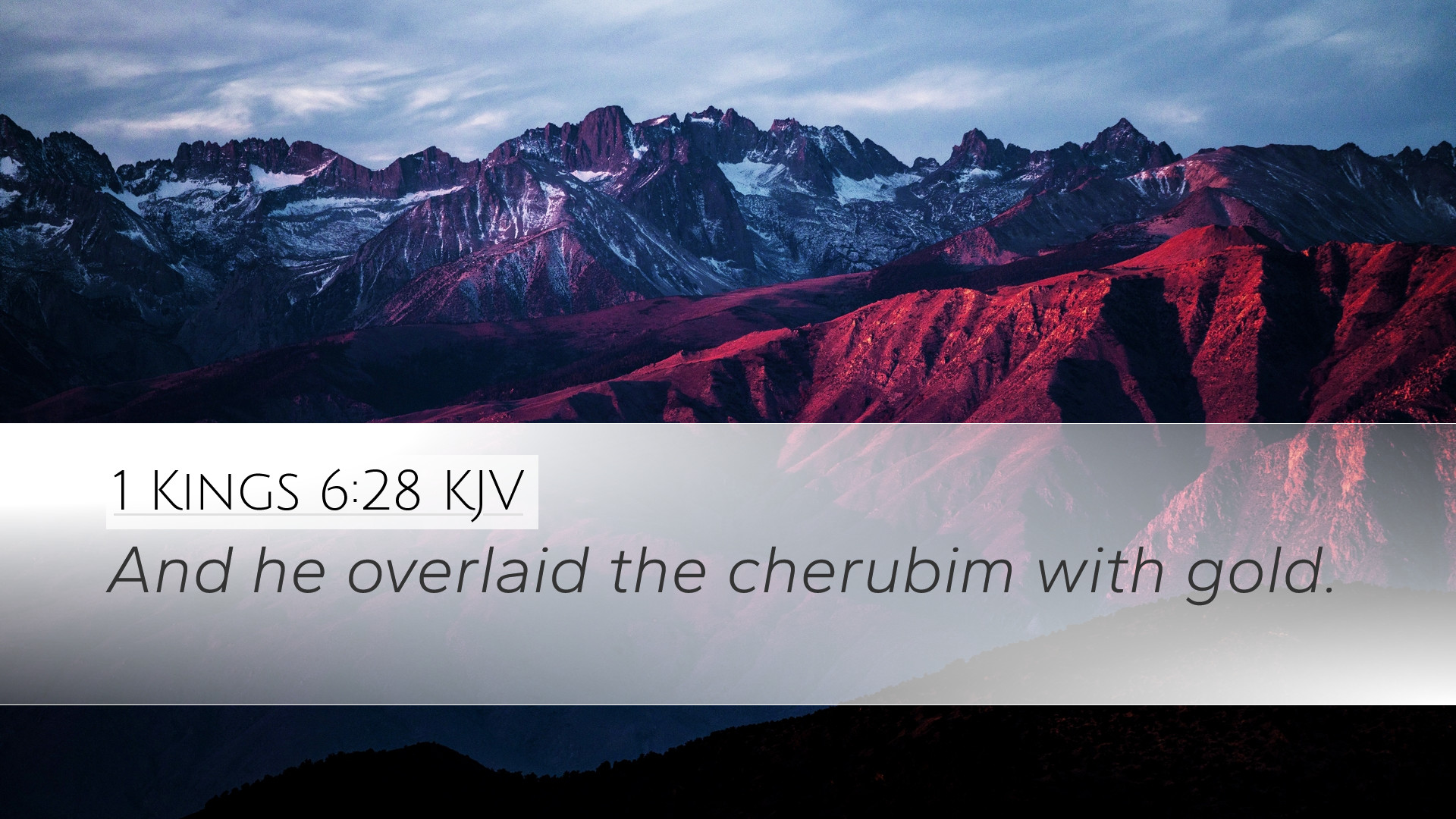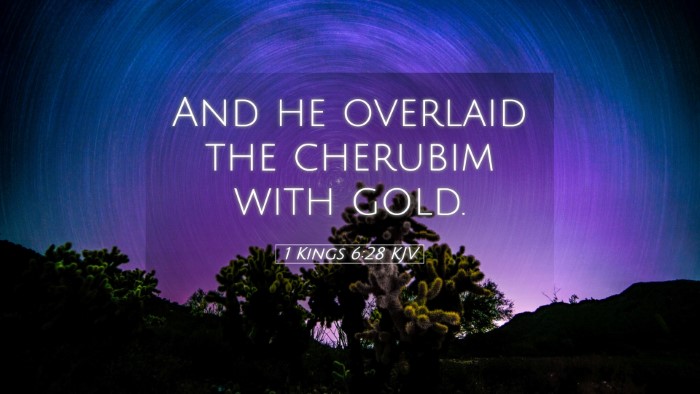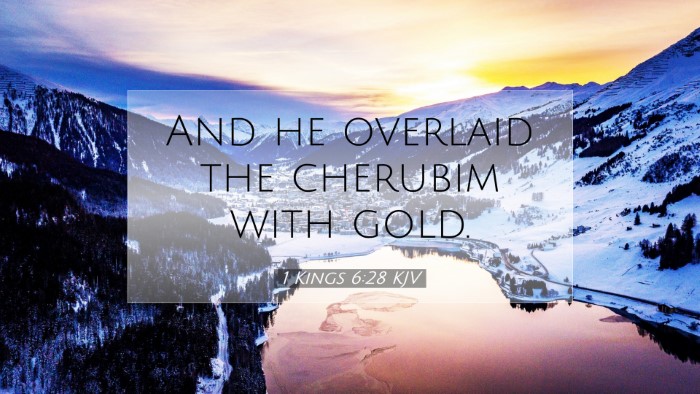Commentary on 1 Kings 6:28
Text of the Verse:
“And he overlaid the cherubim with gold.” (1 Kings 6:28, NKJV)
Introduction
The construction of the Temple by Solomon marks a significant event in Israel's history. In 1 Kings 6, the details of the Temple's structure, materials, and furnishings provide rich theological and spiritual insights. The mention of the cherubim and their gilded overlay is particularly symbolic, representing the divine presence and the majesty of God. The following commentary will delve into the historical, theological, and practical implications of this verse, drawing from renowned public domain commentaries.
Theological Significance of Cherubim
The cherubim are often described as celestial beings associated with the presence of God. In the context of the Temple, they serve as guardians of holiness and symbols of God’s divine majesty:
- Matthew Henry: Describes cherubim as “the emblems of God’s Providence” who stand in proximity to the Divine. They highlight the sanctity of the Holy of Holies and serve as a reminder of God's omnipresence and watchfulness.
- Adam Clarke: Notes that cherubim in the Temple were “the emblem of the Divine Majesty and Protection.” Their presence indicates the serious nature of communion with God, emphasizing that worship must be approached with reverence.
- Albert Barnes: Emphasizes the protective nature of cherubim, representing the guarding of sacred things, and signifies God's guardianship over His people.
The Material of Gold
The decision to overlay the cherubim with gold speaks volumes regarding the splendor and worthiness ascribed to God’s dwelling place:
- Matthew Henry: Interprets the use of gold as a reflection of God’s glory and the richness of worship that ought to be offered to Him. It indicates that nothing ought to be held back in terms of resources when it comes to honoring God.
- Albert Barnes: Highlights that gold represents purity and excellence. The gilding of the cherubim points to the ultimate worth of God's presence, which surpasses all material wealth.
- Adam Clarke: Points out that gold signifies the transcendent nature of God. The overlay serves as a testament to the value of the King who would dwell there, illustrating that the Temple should reflect divine majesty.
Symbolism in Worship
The act of overlaying the cherubim with gold is not merely a physical process but serves to symbolize the nature of worship and the relationship between God and humanity:
- Matthew Henry: Discusses how the landscape of worship in the Temple integrates beauty and reverence. The covered cherubim invite true worshippers to experience the excellence and holiness of God.
- Albert Barnes: Explains that worship is inherently tied to the acknowledgment of God’s splendor and purity. The golden cherubim can serve as a focal point for the congregation, leading them into a deeper understanding of God’s glory.
- Adam Clarke: Believes that the gold overlay acts as a reminder that worship should be conducted with an elevated spirit, aiming to reflect the true worthiness and purity of God.
The Context of the Temple's Construction
In the greater narrative of 1 Kings, understanding the context of Solomon’s Temple is pivotal:
- Matthew Henry: Notes that the splendid details of the Temple serve to reflect God’s covenant relationship with Israel and remind them of His sovereignty. The richness of the structure was a response to God’s revelation to them.
- Albert Barnes: Observes that the Temple functions as a fulfillment of God’s promises to David and the Israelites. By crafting a place for God’s presence, Solomon aligns himself with the divine plan, showcasing the importance of obedience and worship.
- Adam Clarke: Stresses how the construction of the Temple is imbued with messianic significance, pointing forward to Christ as the ultimate meeting place between God and humanity.
Practical Implications for Today's Believers
As modern Christians reflect on 1 Kings 6:28, they are urged to consider several implications for their personal and communal worship:
- Worship with Excellence: Inspired by Solomon's dedication of resources to the Temple, believers are called to offer their best in both service and worship to God.
- Understanding Divine Presence: The imagery of cherubim serves as a reminder of the seriousness of engaging with God. Participating in worship should be approached with both joy and reverence.
- Symbol of Hope: The Temple and its golden cherubim ultimately point followers to Christ, fulfilling the ultimate need for a mediator. For believers today, Christ represents the pinnacle of God’s presence among us.
Conclusion
1 Kings 6:28, though a brief scripture, encapsulates profound truths about the character of God, the nature of worship, and the significance of the Temple. The insights offered by public domain commentaries remind believers of the beauty of God’s holiness and the importance of placing Him at the center of all worship. The gold overlay on the cherubim not only highlights the glory of God but also calls for a dedicated response from His people.


